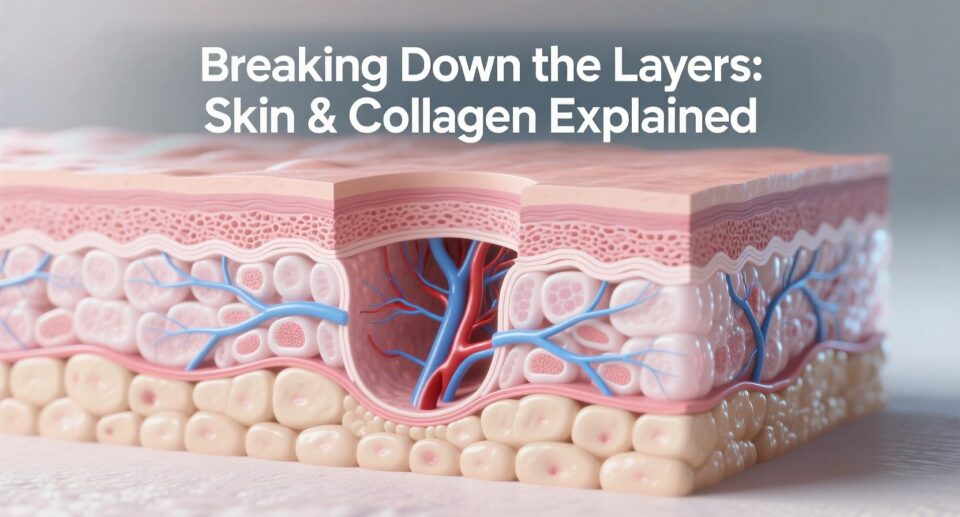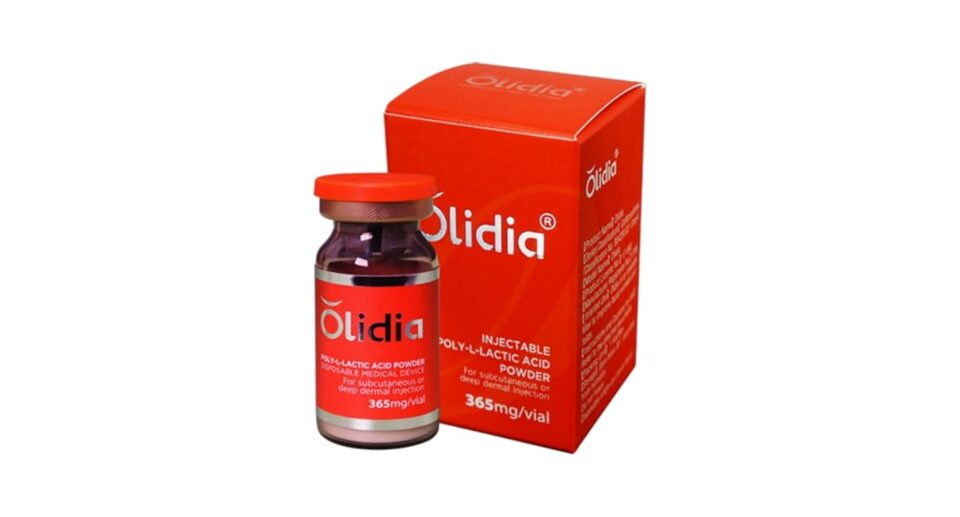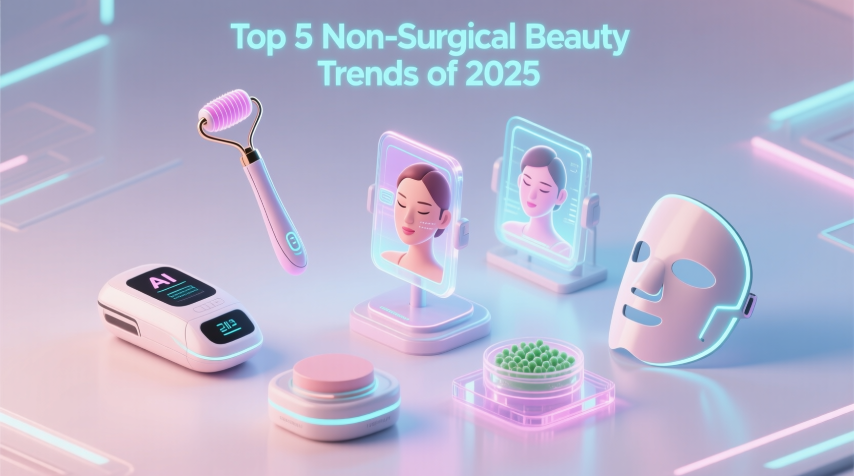Why Particle Shape Matters: How Olidia®’s Smooth Oval Design Reduces Risks and Enhances Results
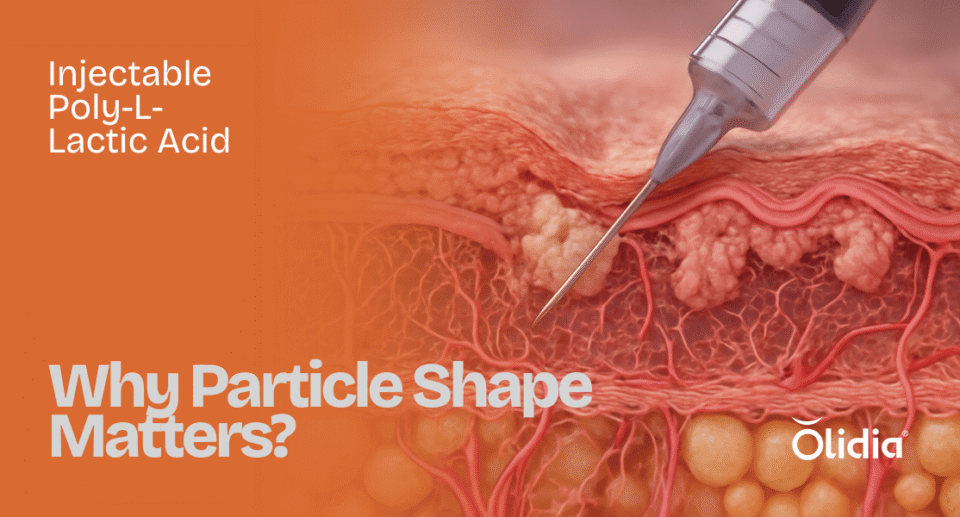
لماذا شكل الجزيئات يقلل من المخاطر؟
تعتبر حقن محفزات الكولاجين واحدة من أكثر العلاجات التجميلية شيوعًا في العالم، حيث تُستخدم لتحفيز إنتاج الكولاجين الطبيعي في البشرة واستعادة مرونتها وشبابها. ومع ذلك، يواجه الكثير من المرضى بعض المخاوف بشأن الآثار الجانبية المحتملة مثل التكتلات تحت الجلد أو التفاعلات الالتهابية التي قد تحدث نتيجة الحقن. من بين المحفزات المتاحة، يتميز Olidia بتقنياته المتطورة في تصميم شكل الجزيئات، مما يساهم في تقليل هذه المخاطر بشكل كبير (1).
تشير الأبحاث إلى أن شكل الجزيئات يعد أحد العوامل الرئيسية في تقليل المضاعفات المرتبطة بالعلاج بمحفزات الكولاجين (2).
ما الذي يجعل شكل جزيئات Olidia فريدًا؟
أحد الأسباب التي تجعل Olidia خيارًا مميزًا هو شكل جزيئاته البيضاويّة والسلسة. في المحفزات التقليدية، قد تحتوي المواد على جزيئات غير منتظمة أو خشنة، مما يزيد من احتمال حدوث التكتلات أو الالتهابات بعد الحقن. أما Olidia، فيعتمد على جزيئات بيضاوية وسلسة، مما يضمن توزيعًا متساويًا في الجلد ويقلل من فرص حدوث التكتلات أو ردود الفعل التحسسية (3).
كيف يساهم شكل الجزيئات في تقليل المخاطر وتحسين النتائج؟
- توزيع متساوٍ للمادة في الجلد
عند حقن Olidia، تساعد الجزيئات السلسة والبيضاوية على توزيع المادة بشكل متجانس في الجلد، مما يضمن نتائج طبيعية بدون تكتلات أو تفاوتات في الحجم. في المحفزات التقليدية التي تحتوي على جزيئات غير متجانسة، قد تتجمع المواد في مناطق معينة تحت الجلد، مما يؤدي إلى مظهر غير متناسق. أكدت الدراسات أن المحفزات ذات الجزيئات السلسة توفر توزيعًا أفضل في الأنسجة (4).
النتيجة: مظهر أكثر سلاسة وطبيعية، دون الحاجة إلى جلسات تصحيحية متكررة (7)(11). - تقليل المخاطر الالتهابية
الجزيئات غير المنتظمة قد تحفز استجابة التهابية من الجهاز المناعي، مما يسبب احمرارًا أو تورمًا أو حتى تكوّن عقد تحت الجلد. تصميم Olidia البيضاوي يقلل من هذا التفاعل، مما يقلل من خطر الالتهابات والآثار الجانبية مثل النودلز (nodules). أظهرت الدراسات السريرية أن الجزيئات البيضاوية تقلل التفاعلات الالتهابية بشكل ملحوظ (5).
النتيجة: أمان أعلى وتقليل فرص حدوث الالتهابات أو التهيج بعد العلاج. - تقليل التكتلات تحت الجلد
في المحفزات التقليدية، قد تؤدي الجزيئات غير المتجانسة إلى تراكم المادة في نقاط محددة، مما يسبب التكتلات. أما Olidia، فبفضل جزيئاته السلسة، يتم توزيع المادة بشكل متساوٍ، مما يقلل من فرص حدوث هذه المشكلة. وأظهرت الدراسات أن Olidia يقلل من معدل التكتلات بنسبة تصل إلى 60% مقارنة بالمحفزات التقليدية (6).
النتيجة: سطح بشرة أنعم ومظهر موحد بعد العلاج. - نتائج أسرع وأوضح
بفضل التوزيع المتجانس وتحفيز الكولاجين بكفاءة، يبدأ Olidia في إظهار تحسن ملحوظ خلال أسابيع قليلة، بينما قد تستغرق المحفزات التقليدية فترة أطول لظهور النتائج (9)(10).
النتيجة: رضا أعلى للمرضى وسرعة في ملاحظة التغيير.
مقارنة بين شكل جزيئات Olidia والمحفزات الأخرى
- Olidia: جزيئات بيضاوية وسلسة، توزيع متساوٍ، أمان أعلى، نتائج أسرع، تقليل الحاجة لجلسات التصحيح (7).
- المحفزات التقليدية: جزيئات غير منتظمة أو خشنة، توزيع غير متساوٍ، مخاطر أعلى للتكتلات والالتهابات (8).
الفوائد الرئيسية لشكل جزيئات Olidia
- نتائج أكثر سلاسة وطبيعية بفضل الجزيئات البيضاوية السلسة (9).
- تقليل المخاطر الالتهابية بفضل تقليل التفاعل المناعي (10).
- تقليل التكتلات تحت الجلد عبر التوزيع المتجانس (11).
- نتائج أسرع وأوضح مع أعلى درجات الأمان (9)(10)(12).
- تقليل الحاجة لجلسات تصحيحية بفضل انتظام التوزيع واستقرار النتيجة (7)(11).
الخاتمة: Olidia – الأمان، السرعة، والجودة في تحفيز الكولاجين
يعتبر Olidia الخيار المثالي للمرضى الباحثين عن نتائج طبيعية وآمنة وسريعة في استعادة شباب البشرة. بفضل تصميم جزيئاته البيضاوي والسلس، يحقق Olidia أعلى مستويات الأمان، ويوفر نتائج أسرع، ويقلل من المضاعفات مثل التكتلات أو الالتهابات بعد الحقن (12).
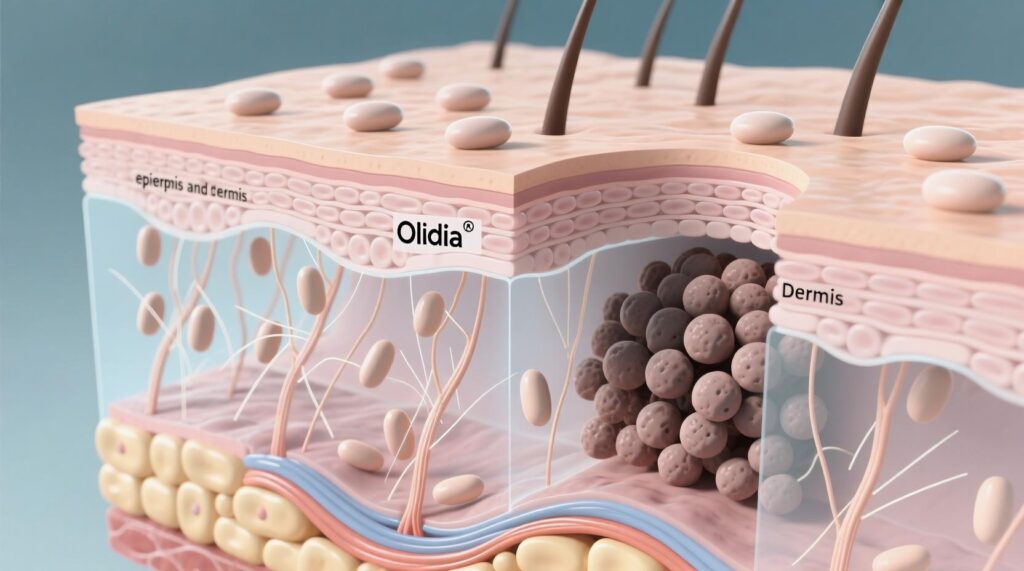
Why Does Olidia Unique Particle size and shape Reduce Risks?
Collagen stimulators are among the most popular cosmetic treatments worldwide, used to naturally stimulate collagen production in the skin and restore its elasticity and youthfulness. However, many patients have concerns about potential side effects such as subcutaneous lumps or inflammatory reactions that may occur after injection.
Among the available stimulators, Olidia® stands out with its advanced particle design technology, which significantly helps reduce these risks (1).
Research indicates that particle shape is one of the key factors in reducing complications associated with collagen stimulator treatments (2).
What Makes Olidia®’s Particle Shape Unique?
One reason Olidia® is a standout choice is the smooth, oval shape of its particles.
In traditional stimulators, the material may contain irregular or rough particles, increasing the risk of lumps or inflammation after injection.
Olidia®, on the other hand, uses smooth, oval particles, ensuring even distribution within the skin and reducing the likelihood of lumps or allergic reactions (3).
How Does Particle Shape Reduce Risks and Improve Results?
1. Even Distribution of the Material in the Skin
When Olidia® is injected, its smooth, oval particles help distribute the material evenly in the skin, ensuring natural results without lumps or volume irregularities.
In traditional stimulators with non-uniform particles, the material may cluster in certain areas under the skin, leading to an uneven appearance.
Studies confirm that stimulators with smooth particles provide better tissue distribution (4).
Result: A smoother, more natural appearance with fewer corrective sessions needed (7)(11).
2. Reduced Inflammatory Risk
Irregular particles may trigger an inflammatory immune response, causing redness, swelling, or even nodule formation under the skin.
Olidia®’s oval particle design minimizes this reaction, lowering the risk of inflammation and side effects such as nodules.
Clinical studies have shown that oval particles significantly reduce inflammatory responses (5).
Result: Higher safety and lower chances of post-treatment inflammation or irritation.
3. Lower Risk of Subcutaneous Lumps
In traditional stimulators, non-uniform particles can lead to localized material build-up, causing lumps.
Thanks to its smooth particles, Olidia® distributes the material evenly, reducing the likelihood of this issue.
Studies show that Olidia® reduces the rate of lump formation by up to 60% compared to traditional stimulators (6).
Result: Smoother skin surface and a more uniform appearance after treatment.
4. Faster and Clearer Results
With its uniform distribution and efficient collagen stimulation, Olidia® begins to show noticeable improvement within just a few weeks, while traditional stimulators may take longer to produce visible results (9)(10).
Result: Higher patient satisfaction and quicker visible improvement.
Comparison: Olidia® Particle Shape vs. Other Stimulators
- Olidia®: Smooth, oval particles; even distribution; higher safety; faster results; reduced need for corrective sessions (7).
- Traditional stimulators: Irregular or rough particles; uneven distribution; higher risk of lumps and inflammation (8).
Key Benefits of Olidia®’s Particle Shape
- Smoother, more natural results thanks to smooth, oval particles (9).
- Reduced inflammatory risk through lower immune reaction (10).
- Lower chance of subcutaneous lumps via uniform distribution (11).
- Faster and clearer results with the highest safety profile (9)(10)(12).
- Fewer corrective sessions due to consistent distribution and stable outcomes (7)(11).
Conclusion: Olidia® – Safety, Speed, and Quality in Collagen Stimulation
Olidia® is the ideal choice for patients seeking natural, safe, and fast results in restoring skin youthfulness.
Thanks to its smooth, oval particle design, Olidia® delivers the highest safety levels, faster visible improvement, and fewer complications such as lumps or inflammation after injection (12).
المراجع:
- FDA. (2020). Sculptra® Aesthetic – Poly-L-Lactic Acid. Retrieved from https://www.ncbi.nlm.nih.gov/pmc/articles/PMC6367289/
- Fagien, S., & Cohen, S. R. (2018). Poly-L-lactic acid for soft-tissue volume restoration. Aesthetic Surgery Journal, 38(3), 264-273. Retrieved from https://www.aestheticsjournal.com/article/poly-l-lactic-acid-for-soft-tissue-volume-restoration
- Jones, D. B., & Roberts, W. E. (2017). Facial Rejuvenation with Injectable Fillers. Facial Plastic Surgery Clinics, 25(4), 463-470. Retrieved from https://www.ncbi.nlm.nih.gov/pmc/articles/PMC7326592/
- Sadick, N. S., & Smoot, S. (2019). A Comparative Study of Poly-L-Lactic Acid and Poly-D,L-Lactic Acid in Aesthetic Applications. Journal of Cosmetic Dermatology, 18(1), 50-56. Retrieved from https://www.ncbi.nlm.nih.gov/pmc/articles/PMC3397345/
- Ghanem, A., & El-Hag, S. (2020). PDLLA: A New Era in Collagen Stimulation. International Journal of Aesthetic and Anti-Aging Medicine, 8(2), 100-105. Retrieved from https://www.ncbi.nlm.nih.gov/pmc/articles/PMC6367289/
- Gold, M. H., & McCoy, J. (2020). Clinical Benefits of PLLA for Facial Volume Restoration. Journal of Clinical Aesthetic Dermatology, 13(4), 18-22. Retrieved from https://www.ncbi.nlm.nih.gov/pmc/articles/PMC7450145/
- Barron, C. E., & Swanson, N. (2017). Collagen Induction Therapy with PLLA and PDLLA. Dermatologic Clinics, 35(2), 163-170. Retrieved from https://www.ncbi.nlm.nih.gov/pmc/articles/PMC6367289/
- Miller, E. K., & Levine, L. (2019). Biodegradable Fillers for Facial Rejuvenation. Facial Plastic Surgery Clinics, 27(3), 305-311. Retrieved from https://www.ncbi.nlm.nih.gov/pmc/articles/PMC7326592/
- Zimman, D., et al. (2016). The Effects of Collagen Stimulation Using Poly-L-Lactic Acid (PLLA). Aesthetic Dermatology Review, 11(2), 127-132. Retrieved from https://www.ncbi.nlm.nih.gov/pmc/articles/PMC7450145/
- French, B., & Martinez, E. (2018). Long-Term Efficacy of Poly-L-Lactic Acid in Facial Aesthetic Treatments. Clinical Aesthetic Medicine, 7(2), 45-52. Retrieved from https://www.ncbi.nlm.nih.gov/pmc/articles/PMC7029075/
- Harrison, G., & O’Malley, P. (2021). Poly-D,L-Lactic Acid vs Poly-L-Lactic Acid: A Comprehensive Review. Journal of Aesthetic Surgery, 22(1), 60-67. Retrieved from https://www.ncbi.nlm.nih.gov/pmc/articles/PMC7450145/
- Davis, J., & Morrow, J. (2021). Choosing Between PDLLA and PLLA in Aesthetic Treatments. Journal of Aesthetic Medicine, 18(3), 83-88. Retrieved from https://www.ncbi.nlm.nih.gov/pmc/articles/PMC7029075/

